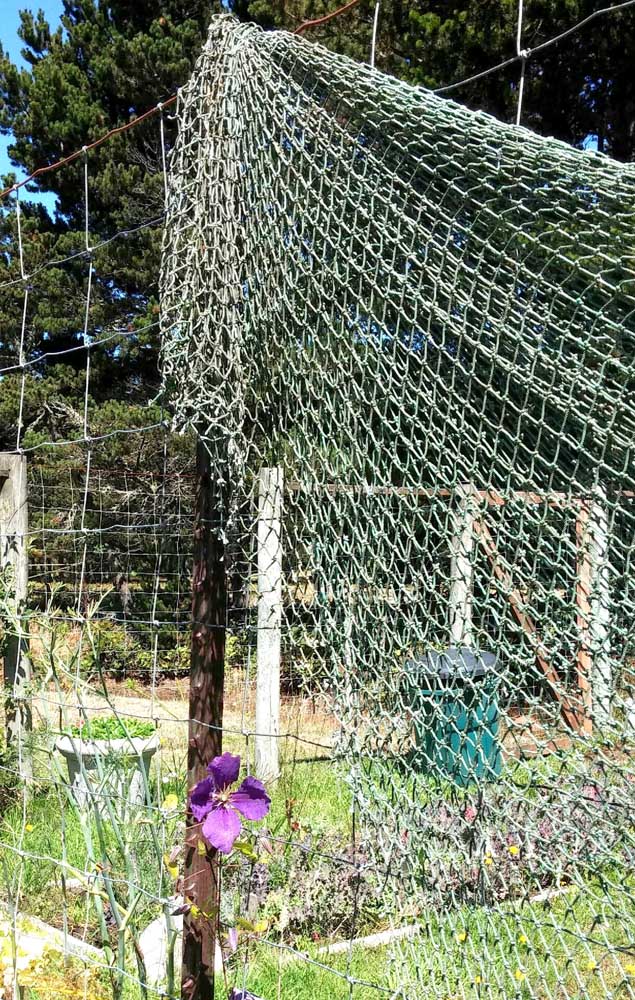Garden Mind: 10 things to do to start a community garden
Published 12:46 pm Tuesday, August 4, 2015

- REBECCA HART PHOTOA lone clematis guards the former Pea Patch garden in Klipsan, now designated for restaurant use only.
In the five years since I first penned and published this primer on making a public garden, communities continue to embrace the essential act of growing food locally. Whether this activity is to preserve organic integrity, to engage in ‘hands-on’ activities, or to get to know our neighbors, for many folks a community garden space is a great resource.
Trending
However, it’s not always clear about how to begin, let alone move forward. Being organic things, gardens morph, things change, gardens come and go. Sometimes the actual gardens are rare, particularly here on the peninsula. Some spaces that formerly occupied gardens are now brown grass. The desire — and need — to have local fresh food has not gone away. What can we do to keep the ball rolling?
Here are my suggestions:
Ten things to do to start a community garden
Trending
1. Gather like-minded people and organize into a group. When a suitable plot is located and you are ready to begin, apportion and delegate tasks. For tips on how to organize a garden community, write a compact for the group, formulate rules, allocate plots and so on, go to the Internet and Google community gardens, local extension offices, or inquire of other local groups.
2. Locate suitable land with access to water and electricity. You’ll need fencing to keep out four-legged marauders. Vacant lots, schoolyards, retirement homes and churchyards are all potential sites. Get permission from property owners, in the form of a written agreement (it doesn’t need to be fancy to be binding).
3. Plan and design your garden carefully. Gardens for food production need full sun for a minimum of six to eight hours a day. Consider how big a plot for each family. When laying out plots be sure to leave enough space for paths for walking and trundling wheelbarrows or carts. Remember: most gardens grow in under six months; typically from May, after last frost and when soil has dried out from spring rains, until October, or first killing frost. NOTE: Even a space destined for future development can be a garden of ten months. Think Creatively.
4. Garden plot-tender: Make certain you understand clearly the work and commitment involved in growing food in a community plot. It takes coordination and work to grow plants successfully and to make sure everyone shares the labor. Someone needs to inventory the skills of members. Ask neighborhood gardeners to share their experience. (Garden Tour exhibitors may be willing to share their experience.) For good basic information, see websites of groups like the this Community Garden group: https://communitygarden.org/
5. Decide whether your garden will be organic, natural or “anything goes.” Incorporate this essential decision into your contract rules. Will there be a compost pile? Educate members about how carbon- and nitrogen-based compost differs; also explain what does not go into the pile. One of the best discussions on the role of bacteria-enriched compost: Gardening at the Dragon’s Gate by Wendy Johnson.
6. Barter where you can to cut expenses (goes back to member skills inventory). If you need a toolshed built, can you trade produce for carpentry skills? Scour yard sales. Need to raise money for fencing, or building materials? Create a fundraiser tailored your needs. Ask local business for contributions. Is there a local school club or service group that can get involved in someway? Remember: Nothing ventured, nothing gained!
7. Assemble tools and supplies: hoses, couplings, sprinklers, watering devices, wheelbarrows. Decide which tools and supplies are for communal use. Are new soils or amendments necessary? For example, soil is much less expensive in truckloads! (You may be able to go in on shares with private gardens.)
8. Write down your garden’s goals and record the progress in a garden journal. Set up a website. Tweet and blog your successes! Spread the word to local media outlets. Ask farmers — and Master Gardeners — at your local Farmers’ Market for expert advice on problems you’re having with your crop. Chances are pretty good that your problem is not unique and that you will find a solution. This link is good for urban area resources: foodsecurity.org/urbanag.html.
9. Share your produce. Plant extra! Encourage neighbors to join you next season. According to many figures, one in six Americans faced hunger in 2013; many relied on food pantries to help sustain their families. (feedingamerica.org/hunger-in-america/hunger-facts.aspx) Plant more than you need and regularly harvest and donate your surplus.
10. Get to work NOW! If you can’t begin a garden now, it is still a good time to plan. FYI: In many places grants are available for getting a garden started, or for elements of a garden (hard-scaping or fencing) or for taking gardens to another level. NOTE: It may take more than one season to get things underway, but don’t fret. Find some vacant land and sheet mulch to prepare for a fall planting, while details get worked out.
It is my hope that this short primer helps get spaces designated so that food –and herbs and flowers too! — can be grown by anyone who wants to. Food can be grown almost anyplace, once basic plant needs are understood. Let’s get the ‘place’ to grow in place first.
This version of Ten Things to Do to Start a Community Garden is a mash-up of an article first published in September 2009 in The Nation; Walter Mosley, is editor of this feature. The story was reprinted in Huffington Post on October 20, 2009, and again in the Holistic Pediatrics quarterly Pathways to Family Wellness, Winter 2011: tinyurl.com/CommGardenTips)
Thank you for carrying the torch. Happy Gardening, Happy Eating!






